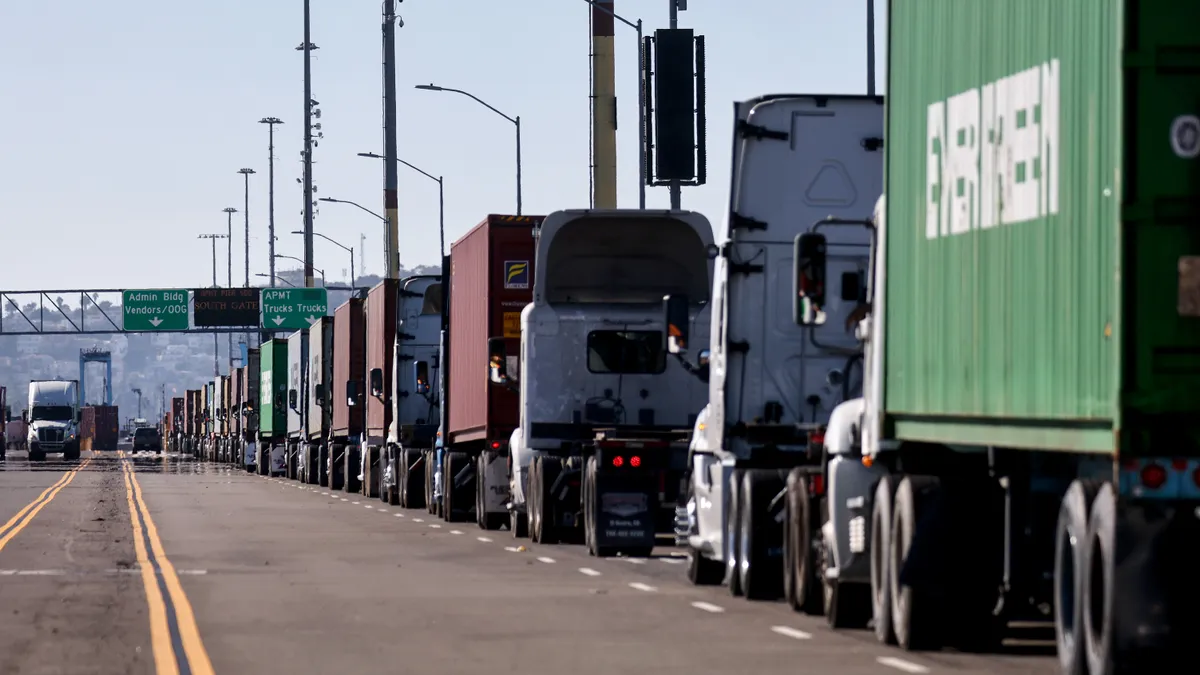The California Air Resources Board met Thursday and agreed to move forward with plans to mandate a transition to zero-emission trucks, shuttle buses and certain other buses beginning in 2024. A final decision on the Advanced Clean Fleet regulation will occur in the spring of 2023.
The action aims to fight pollution. Medium- and heavy-duty vehicles contribute a disproportionately high share of the transportation sector’s greenhouse gas and nitrogen oxide emissions, CARB notes.
Under the plan currently on the table, only zero-emission medium- and heavy-duty trucks could be sold in California beginning with the 2040 model year. For federal and commercial fleets of 50 more vehicles, or those owned by an entity with more than $50 million in gross revenue, all new trucks purchased in California after Jan. 1, 2024, must be zero-emission vehicles. Different vehicle types and usages would have various phase-in dates under the plan that CARB is considering.
State and local governments would have to purchase zero-emission vehicles amounting to 50% of the additions to their fleets beginning in 2024. All new purchases would have to be ZEVs beginning in 2027.
Exemptions would be allowed to fleet owners when such vehicles are unavailable, cannot meet daily needs or operate less than 1,000 miles per year. Deliveries of ZEVs can be postponed one year if the construction of charging infrastructure is delayed. Agencies in low-population counties would be exempt until 2027.
Commercial fleets would be required to purchase only zero-emission box trucks, vans, two-axle buses, yard trucks and light-duty delivery vehicles beginning in 2035. Other single-unit trucks, day-cab tractors and three-axle buses would have to meet that requirement in 2039, and sleeper-cab tractors and specialty vehicles would have until 2042 to comply.
“Zero-emission vehicles are the only technology that completely eliminates exhaust pollution in communities heavily impacted by truck traffic,” said Board Chair Lianne Randolph in her opening remarks. Noting that most of California’s ports and rail yards are within one mile of disadvantaged communities, she said that “these communities will directly benefit from this regulation.”
Andrea Vidaurre, senior policy analyst for the People's Collective for Environmental Justice, said in an interview before the hearing that “communities across the state have massive industrialization happening.”
In the region known as the Inland Empire, centered around the cities of Riverside and San Bernardino, there are an estimated 1 billion square feet of warehouse space, with trucks coming and going all day long. “Many truck routes in our communities are right next to homes and schools,” Vidaurre said.
Vidaurre and other community advocates, speaking at the hearing, want to see even tougher regulations. Their principal asks include lowering the fleet size for Class 7 and 8 tractors from 50 to 10 vehicles and advancing the mandatory 100% ZEV sales model year from 2040 to 2036.
California is not alone in pushing for cleaner trucks. On Tuesday, North Carolina Gov. Roy Cooper issued an executive order to require truck manufacturers to sell an increasing percentage of medium and heavy-duty zero-emission trucks in the state over time. In 2020, North Carolina was also a signatory to a multi-state agreement to require 100% sales of zero-emission trucks by 2050. California, Colorado, Connecticut, Hawaii, Maine, Maryland, Massachusetts, New Jersey, New York, Oregon, Pennsylvania, Rhode Island, Vermont, Washington and the District of Columbia also signed the memorandum.
As with California’s recently enacted ban on new gasoline-powered cars beginning in 2035, 17 other states and the District of Columbia can adopt California’s standards instead of less restrictive federal requirements under the Clean Air Act.
The proposed regulations are “going to set the bar for not just California but for many states,” Sam Appel, California state manager for the BlueGreen Alliance, said in an interview this week. “It's probably the most significant rule in the nation for quite a long time related to pollution, emissions, environmental justice and workers and businesses in the trucking industry.”
While transit and school buses are regulated separately, the Advanced Clean Fleet regulation would cover two and three-axle buses. Some intercity bus operators are already trying out electric buses.












